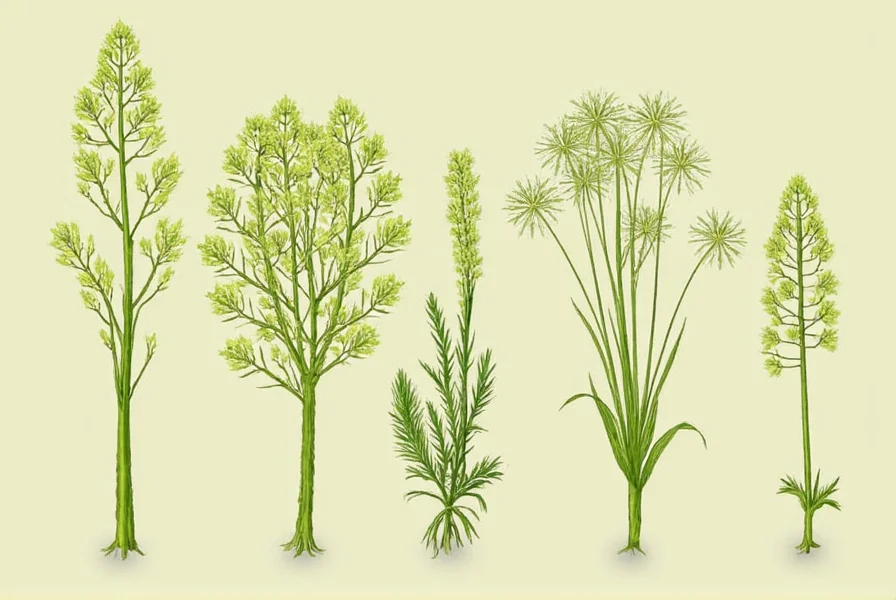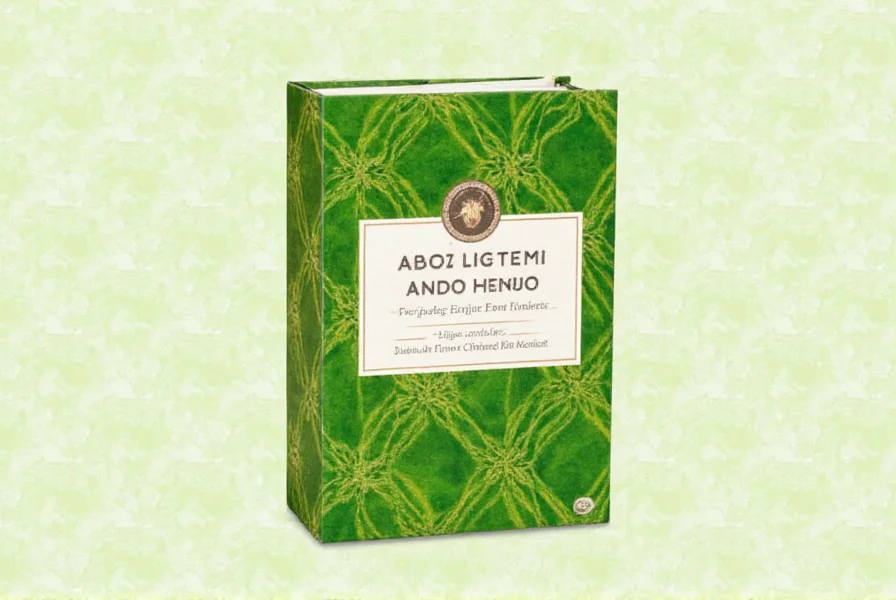Hinojo has been valued for centuries not only as a culinary staple but also for its medicinal properties. This versatile plant offers a distinctive anise-like flavor that enhances numerous dishes while providing significant nutritional value. Understanding hinojo's complete profile helps appreciate why it remains popular across global food cultures and traditional medicine practices.
Botanical Profile of Hinojo
Hinojo (fennel) is a hardy perennial plant that grows up to 2.5 meters tall with hollow stems, bright green feathery leaves, and clusters of small yellow flowers. The plant produces aromatic seeds that contain essential oils, primarily anethole, which gives hinojo its characteristic licorice-like flavor. There are two main varieties of hinojo:
| Variety | Characteristics | Primary Uses |
|---|---|---|
| Sweet Fennel (Florence Fennel) | Bulbous base, milder flavor | Culinary - eaten raw or cooked |
| Bitter Fennel (Wild Fennel) | Thinner stalks, stronger flavor | Medicinal - seeds and essential oils |
Nutritional Composition of Hinojo
Hinojo is remarkably nutrient-dense while being low in calories. A 100-gram serving of raw hinojo bulb contains:
- 31 calories
- 7 grams of carbohydrates
- 3.1 grams of dietary fiber (12% of daily value)
- 1.2 grams of protein
- Substantial amounts of vitamin C (20% DV), potassium (9% DV), and manganese (10% DV)
- Rich in antioxidants including flavonoids, phenolic compounds, and volatile oils
The seeds contain higher concentrations of essential oils and minerals, making them particularly valuable for medicinal applications. When exploring hinojo nutritional value, it's important to note that different parts of the plant offer varying nutrient profiles.
Culinary Applications of Hinojo
Hinojo's versatility in cooking makes it a chef's favorite across multiple culinary traditions. The different plant parts serve distinct purposes:

- Bulb: Can be eaten raw in salads for crunch and mild flavor, or roasted, grilled, or braised to develop sweeter notes
- Stalks and fronds: Used as aromatic bases in soups, stews, and stocks, similar to celery
- Seeds: Employed as spice in breads, sausages, and vegetable dishes; commonly used in Indian, Middle Eastern, and Italian cuisines
When considering how to use hinojo in cooking, remember that the bulb becomes more tender and sweet when cooked, while the raw bulb offers a refreshing crunch perfect for salads. The fronds make an excellent garnish with a more delicate flavor than the seeds.
Health Benefits of Hinojo
Traditional medicine systems worldwide have utilized hinojo for various health purposes, and modern research increasingly supports many of these applications:
- Digestive health: Hinojo tea is renowned for relieving bloating, gas, and indigestion. The antispasmodic properties help relax intestinal muscles.
- Anti-inflammatory effects: Compounds in hinojo may reduce inflammation markers in the body.
- Antioxidant properties: Rich in various antioxidants that combat oxidative stress.
- Respiratory support: Traditionally used to ease coughs and bronchitis symptoms.
- Hormonal balance: Some studies suggest hinojo may help regulate menstrual cycles and reduce PMS symptoms.
When researching hinojo plant benefits, it's essential to distinguish between traditional uses and scientifically verified effects. While many cultures have used hinojo medicinally for centuries, not all applications have robust clinical evidence supporting them.
Selecting and Storing Hinojo
Choosing quality hinojo and storing it properly maximizes both flavor and nutritional value:
- Look for firm, heavy bulbs with crisp white bases and vibrant green fronds
- Avoid bulbs with brown spots, soft areas, or flowering tops
- Store uncut hinojo in the refrigerator's crisper drawer for up to 5 days
- For longer storage, slice the bulb and freeze it for cooking applications
- Keep seeds in an airtight container away from light and heat
Growing Hinojo at Home
Hinojo is relatively easy to grow in home gardens, making it accessible for those interested in fresh, organic produce:
- Plant seeds directly in well-drained soil after last frost
- Requires full sun and regular watering
- Matures in 60-90 days depending on variety
- Harvest bulbs when they reach tennis ball size
- Collect seeds when they turn from green to brown

Understanding growing hinojo in home garden techniques allows enthusiasts to enjoy this plant throughout its growing season. Note that hinojo can self-seed prolifically, so some gardeners contain it in containers to prevent it from spreading.
Potential Side Effects and Precautions
While hinojo is generally safe when consumed in culinary amounts, certain precautions should be noted:
- Some individuals may experience allergic reactions, particularly those sensitive to carrots or celery
- Large medicinal doses may interact with certain medications
- Pregnant women should avoid consuming large amounts of hinojo seeds
- People with estrogen-sensitive conditions should consult healthcare providers before using hinojo medicinally
Conclusion
Hinojo represents a remarkable plant that bridges culinary enjoyment and potential health benefits. Whether you're exploring hinojo tea benefits for digestive support or incorporating the fresh bulb into your cooking, understanding this plant's complete profile enhances your ability to use it effectively. As with any natural remedy or food, moderation and awareness of personal sensitivities remain important considerations when adding hinojo to your diet or wellness routine.
Frequently Asked Questions
What is the difference between hinojo and anise?
While both have similar licorice-like flavors, hinojo (fennel) and anise are different plants. Hinojo is Foeniculum vulgare with a bulbous base and feathery leaves, while anise (Pimpinella anisum) is primarily grown for its seeds. Hinojo has a milder flavor and all parts of the plant are edible, whereas anise is used almost exclusively as a seed spice.
Can hinojo help with digestion?
Yes, hinojo has been traditionally used to support digestion. The compounds in hinojo, particularly in the seeds, have antispasmodic properties that can help relax intestinal muscles, reduce bloating, and alleviate gas. Hinojo tea is a common natural remedy for digestive discomfort in many cultures.
How do I prepare hinojo for cooking?
To prepare hinojo for cooking, trim the stalks and root end, then remove any tough outer layers. The bulb can be sliced, diced, or quartered depending on your recipe. The feathery fronds make an excellent garnish. For raw applications like salads, slice the bulb thinly. For cooking, you can roast, grill, braise, or sauté hinojo to develop its natural sweetness.
Is hinojo safe during pregnancy?
Hinojo is generally safe in culinary amounts during pregnancy, but medicinal quantities (such as concentrated teas or supplements) should be avoided. Some compounds in hinojo may have estrogen-like effects, so pregnant women should consult with their healthcare provider before using hinojo medicinally. The bulb used in normal cooking quantities presents minimal risk.
What are the main health benefits of hinojo tea?
Hinojo tea is primarily known for supporting digestive health, helping to relieve bloating, gas, and indigestion. It may also have anti-inflammatory properties, support respiratory health, and provide antioxidant benefits. Some people use hinojo tea to help with menstrual discomfort and to promote relaxation. The tea is caffeine-free and generally well-tolerated when consumed in moderate amounts.











 浙公网安备
33010002000092号
浙公网安备
33010002000092号 浙B2-20120091-4
浙B2-20120091-4